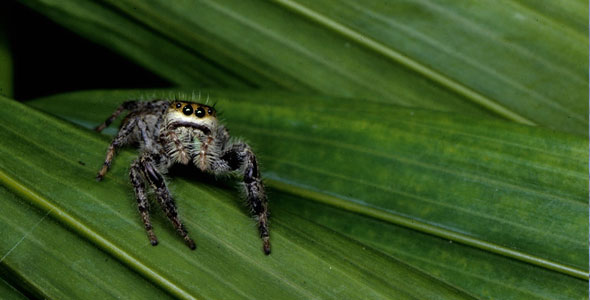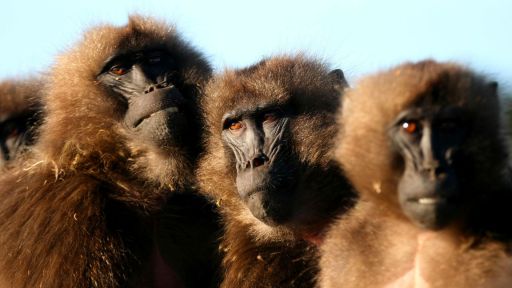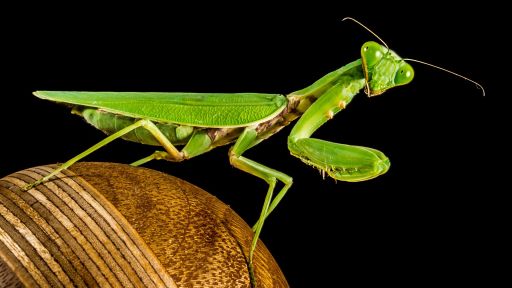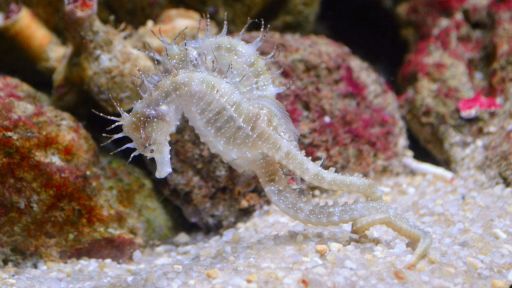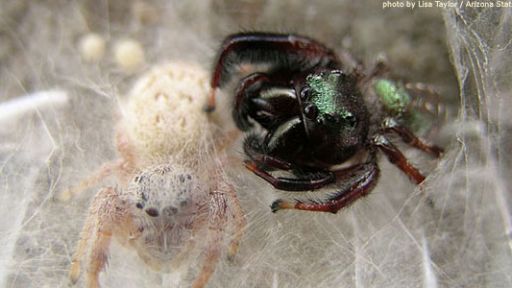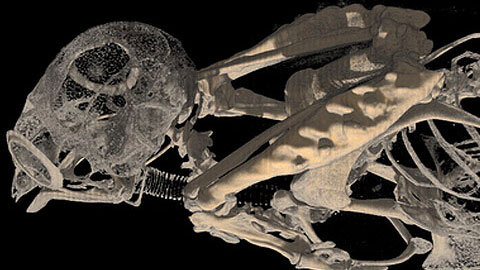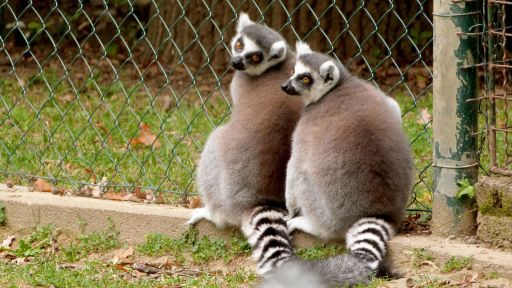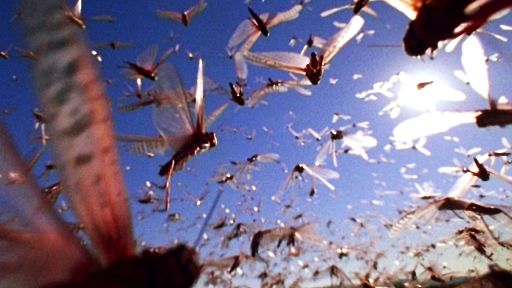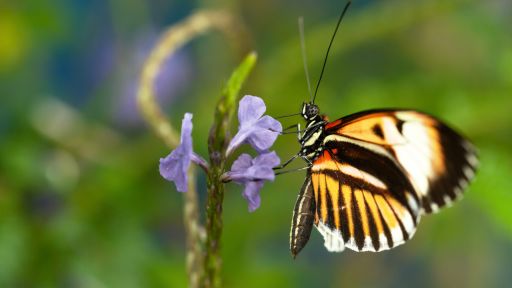While gossip columnists may have full reign over the sex lives of Hollywood stars, scientists have invaded the habitats of some of the most infamous cheating animals to reveal some real life monkey business. Today’s red carpet headline: “Free-spirited bonobos seek perpetual orgies with any available male or female in any combination.”
In the animal kingdom, when it comes to mating, promiscuity is the rule rather than the exception. About 90 percent of mammals have multiple mates, and cheating on social mates is observed in almost all species. In fact, only 3 to 10 percent of mammals are even socially monogamous.
We’ve identified some animals with unusual mating practices and behaviors. Find out why these animals are such hot commodities and why evolution favors their promiscuous behavior.
It’s the planet’s awful truth worth gossiping about.
Think you have a good sex life? Think again.
Check out these swingers and how they make the scene:
- Fire-colored Beetles and Lightning Bugs Black Light Rave: Fire-colored beetles sometimes use toxic substances as aphrodisiacs. The male entices his mate by presenting a chemical offering known as cantharidinan, which is secreted from a gland in his head. More of the chemical is transferred to the female beetle in the male’s sperm. And she, in turn, transfers the chemical to her eggs, which are protected by the chemical from predators. And, talk about incredible diversity of approaches to sex — there are female lightning bugs that have one flash pattern to attract males of their own species with which to mate, and another that mimics the pattern of a different species. The false come-on is a trap — any males of the other species that respond are eaten.
- Honey Bee Queens Reign Supreme: In hives, females rule. Early in a queen’s life, she makes several mating flights and can mate with anywhere from one to more than 40 drones. When a queen flies by, the males mob her, deposit their sperm, and then subsequently die. While the drones may not appreciate this lethal affair, the worker bees in the colony prefer more promiscuous queen bees. In fact, the number of partners a honey bee queen has influences how attractive the queen is to the several thousand worker bees in the hive and how long her reign is likely to be. Promiscuity may also improve colony disease resistance by boosting the genetic diversity of her offspring. The queen stores and uses the sperm of all these males throughout her lifetime so she can focus on her most important job of laying eggs. In a successful hive, the bees are buzzing: “Long live the queen!”
- Bonobos Throw a Big Sex Party: Some animals do not conform to any mating system and engage in frequent sex with many partners. Probably the most well-known example are bonobo chimpanzees, known for the frequency, creativity, indiscernibility and variability in their sexual interactions. Both males and females mate with multiple partners to ease social tensions within the group and practice free love with bonobos of both sexes — even while hanging upside down.
- Desperately Seeking Topi Antelopes: Thirty days of unending sex makes for some tired topis. Over-amorous females, fertile only one day a year, seek out the most desirable males and hound them to absolute exhaustion. Biologists have observed that males often turn down mating opportunities — Say it ain’t so! That’s right — this species exhibits sexual behavior that’s the reverse of most animals, in that females are aggressive, while the males are standoff-ish. In the topi battle of the sexes, females take the lead — mating several times with each of about four males on average.
- Birds Make Desperate Housewives: The hedge sparrow has an incredible mating game that never seems to end. Even after the female sparrow has paired with a male, she keeps her eye out for other possibilities. Extramarital partners and sexual communes are common for these polyandrous females because it means they can have more offspring. Like the hedge sparrow, female barn swallows also shop around for multiple male sexual partners, and the males that are small, dark and handsome get the girls. The females judge the males by their looks, and if the male breast and belly feathers lose their sheen, it’s a cue to the female to start looking elsewhere for her next mate.
- Elephant Seal Beach Blanket Bingo: While you’re watching to make sure no one takes your towel-draped lounge chair on the beach, male elephant seals are watching to make sure no one takes their bathing beauties. Large, blubbery male elephant seals called “beach masters” protect their gals from other guys trying to move in on their territory. A single breeding bull may control a harem of 100 or more, and only the biggest and most fearsome bulls get to mate. The males only become beach masters after they duke it out amongst themselves with their pendulous noses and teeth. Fights can involve bloody clashes and repeated strikes until one male submits and the other one stands victorious.
- Jumping Spiders Dance Dance Revolution: A jumping spider is more than just a pretty face. These guys have hidden talents way beyond anything you’ve seen on reality shows, “Dancing with the Stars” and “American Idol.” Once onstage, the male spider attracts the gaze of the females, and then begins to coordinate an elaborate show involving singing and dancing. The females pick up the sound vibrations, while the male waves his front legs and zigzags in an intricate courtship “flamenco dance” routine. With his tufted legs straight up in the air, the male beats his abdomen and moves his legs rapidly. After a dramatic crescendo, he taps a female gently on the back and then tries to mount her. If the male doesn’t get it just right, he suffers a fate worse than a brutal critique from “American Idol” judge Simon Cowell. If his performance is flawed, he’s liable to end up as dinner.
- North American Elk Hoedown: It’s all about posturing and foreplay for these strapping guys. Bull elk compete with one another for the right to breed with a herd of females during a two-month long mating season. Depending on his level of experience, a bull elk can be the master of a harem of anywhere from 5 to 60 cows, as the female elk are called. Mature, antlered bulls compete for cows by displaying their antlers, necks and bodies, and emit strong, musky odors and “bugle.” If this “tough-guy” approach doesn’t work, the bulls may have a scuffle and put those antlers to good use.
- Bower Birds Build Love Shacks: In the name of love, bower birds may take out your garbage and rival even the best recycling program. These charmers will build elaborate structures, called bowers, out of everything from leaves and sticks to bottle caps and clothespins. And, that’s just the architecture. The males are also multi-talented interior designers, and may use a leaf or twig to paint the inner walls with a stain made from chewed plants, charcoal, and saliva. The bower serves to show off the male’s strength, and attract and seduce one or more mates. When a female arrives to inspect the structure, the male entertains her with an elaborate dance. Once the show is over, the female most often shows her approval by mating with the male and then flying off to build a nest in the neighborhood. Then the male is open for business again: Ladies welcome!
- Birds of Paradise Flash and Flutter: When it comes to courtship displays, these species are the fashion icons of the bird world, donning lacy feathers, head ribbons, shiny breast shields — even bonnets. In these elaborate “costumes,” the male birds put the moves on the ladies and launch into theatrical routines. Taking a step back in time, the birds get boogying and downright funky. They hop and shake, flap and flutter — until the female is won over by the male bird with the best feathers and razzle-dazzle display.

